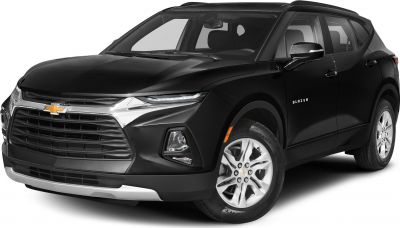 2018 Volkswagen Atlas Dimensions, Size & Specs
2018 Volkswagen Atlas Dimensions, Size & SpecsMeasurements of the 2018 Volkswagen Atlas, engineered for optimal performance and comfort
| Dimensions | |
|---|---|
| Length: | 5036 mm198.3 in16.5 ft |
| Width: | 1989 mm78.3 in6.5 ft |
| Height: | 1778 mm70.0 in5.8 ft |
| Ground Clearance: | 203 mm8.0 in0.7 ft |
| Trunk Capacity: | 583 liter20.6 cu ft |
| Trunk Capacity (Max): | 2741 liter96.8 cu ft |
| Weight Specifications | |
| Curb Weight: | 1915-2042 kg4222-4502 lbs |
| Maximal permitted Weight: | 2550-2720 kg5622-5997 lbs |
| Tire Specifications | |
| Rims Sizes: | 18-inch rims:
|
| Tire Sizes: |
|
The Volkswagen Atlas, produced from 2017 to 2020 for model years starting in 2018, is a spacious midsize SUV that combines practicality with robust design. Measuring 5036 mm (198.1 inches) in length, 1989 mm (78.3 inches) in width, and standing 1778 mm (70 inches) tall, the Atlas offers ample room for passengers and cargo, making it ideal for families and adventurers alike. Its curb weight ranges between 1915 kg (4222 lbs) and 2042 kg (4503 lbs), while the maximum allowable weight goes up to 2550-2720 kg (5620-5997 lbs), ensuring a solid presence on the road with reliable load-bearing capacity.
The Volkswagen Atlas features a ride height or ground clearance of 203 mm (8 inches), providing confident handling over various terrains and enhancing its SUV capability. Equipped with rim sizes ranging from 18 to 20 inches (8J x 18, 8J x 20), the Atlas uses tires sized 245/60 R18 and 255/50 R20, balancing comfort and road grip efficiently.
Cargo space is a highlight of the Atlas, with a rear luggage capacity of 583 liters (20.6 cubic feet) that dramatically expands to 2741 liters (96.7 cubic feet) when the rear seats are folded down, accommodating large loads and gear for long trips or daily errands. This volume versatility makes the Atlas stand out as a practical SUV for both urban and outdoor lifestyles.
Overall, the Volkswagen Atlas (2018–2020) combines notable external dimensions, versatile interior space, and sturdy construction, positioning itself as a compelling choice in the competitive midsize SUV market. Whether for family use, cargo transport, or light off-road excursions, the Atlas delivers dimensionally and functionally.
Discover the standout features that make the 2018 Volkswagen Atlas a leader in its class
Have a question? Please check our knowledgebase first.
The Volkswagen Atlas SUV produced from 2017 to 2020 has a length of 5036 mm (198.2 inches), making it a fairly large vehicle in the mid-to-full-size SUV category. It has a width of 1989 mm (78.3 inches) without mirrors, providing ample interior space and a sturdy road presence. The height of the vehicle is 1778 mm (70.0 inches), which is typical for SUVs to allow comfortable seating and good headroom for passengers. These generous dimensions contribute to a spacious cabin that accommodates up to seven passengers comfortably.
The Volkswagen Atlas from 2018 to 2020 has a curb weight ranging from 1915 to 2042 kg (4222 to 4502 lbs) depending on trims and options. This weight reflects the vehicle's robust build, safety equipment, and size. While the weight contributes to a stable and comfortable ride by effectively absorbing road imperfections, it also impacts fuel economy, making it less efficient than lighter compact SUVs. Additionally, the added weight influences acceleration and maneuverability, requiring a powerful engine to maintain responsive performance.
The 2018-2020 Volkswagen Atlas offers substantial luggage capacity. With all seats in place, it provides 583 liters (20.6 cubic feet) of cargo space, which is suitable for everyday needs like groceries or small luggage. When the rear seats are folded down, the cargo volume expands dramatically to 2741 liters (96.8 cubic feet), making it ideal for transporting large items, moving, or extended trips requiring more storage space. This versatility in cargo capacity is one of the Atlas's highlights, balancing passenger comfort with cargo utility.
The Volkswagen Atlas, measuring 5036 mm (198.2 inches) in length and 1989 mm (78.3 inches) in width, is quite a large SUV. Most standard residential garages typically accommodate cars up to about 5 meters (16.4 feet) long and 2.4 meters (7.9 feet) wide, so the Atlas just fits lengthwise but requires careful parking to avoid door collisions due to its width. Height-wise at 1778 mm (70 inches), it comfortably fits under typical garage ceilings. Owners should measure their garage for width and length to ensure easy access but generally, the Atlas can fit into a standard single-car garage with some caution.
The Volkswagen Atlas has a ground clearance of 203 mm (8 inches), which is decent for a crossover SUV. This clearance provides good capability for mild off-road adventures, such as driving on uneven gravel roads, light trails, and snowy conditions. However, the Atlas is primarily designed as a family-friendly SUV optimized for road comfort and towing rather than extreme off-roading. Its ride height offers enough clearance to navigate common obstacles, potholes, and moderate terrain without damaging the undercarriage.
The Volkswagen Atlas offers rim sizes ranging from 18 to 20 inches, with tire sizes such as 245/60 R18 and 255/50 R20. Larger wheels with lower-profile tires, like the 20-inch rims, enhance handling by reducing sidewall flex but may result in a firmer ride over bumps. Conversely, 18-inch wheels with higher-profile tires provide better shock absorption for comfort but slightly less precise cornering. The tire widths offer a wide contact patch for improved road grip, enhancing stability and traction in various driving conditions, contributing to balanced ride quality and confident handling.
The 2018 Volkswagen Atlas was Volkswagen's first three-row SUV designed primarily for the North American market, so it does not have a direct predecessor in the VW lineup. Compared to smaller Volkswagen SUVs like the Tiguan, the Atlas is significantly larger and heavier. With a length of 5036 mm vs. Tiguan Mk2's approximate 4712 mm, and curb weight of about 1915-2042 kg compared to Tiguan's lighter weight (around 1600 kg), the Atlas is designed for more passenger capacity and cargo volume. This jump in size represents VW's strategy to offer a more spacious and family-oriented SUV.
The Volkswagen Atlas competes with midsize SUVs like the Honda Pilot, Ford Explorer, and Toyota Highlander. Dimensionally, the Atlas at 5036 mm (198.2 inches) in length is on the longer end compared to the Pilot (~4995 mm), Explorer (~5040 mm), and Highlander (~4890 mm). Its width of 1989 mm (78.3 inches) is also comparable or slightly wider than these rivals, which contributes to roomy interiors. The Atlas’s roomy cargo capacity and three-row seating layout are among the more generous in this segment. Overall, the Atlas offers competitive, often slightly larger dimensions aimed at maximizing passenger and cargo space.
The Volkswagen Atlas has a maximum weight (gross vehicle weight) ranging from 2550 to 2720 kg (5622 to 5998 lbs), depending on the specific model and trim. This rating represents the combined weight of the vehicle, passengers, cargo, and any additional load like towing. Understanding the maximum weight is crucial for maintaining safety, vehicle performance, and legal compliance. Exceeding this limit can strain the engine, brakes, suspension, and transmission, potentially causing premature wear or failure. The Atlas’s generous weight allowance reflects its capability as a family SUV that can handle heavy loads and towing tasks.
The 2018-2020 Volkswagen Atlas is designed as a spacious three-row SUV, providing seating for up to seven passengers. It offers flexible interior configurations with ample legroom and headroom in all three rows, making it a suitable vehicle for larger families or those needing extra passenger capacity. Front and second-row seats provide comfortable seating for adults, while the third row is best suited for children or shorter adults due to slightly reduced space. The large footprint of the Atlas translates into comfortable seating and cargo versatility, supporting family road trips and everyday use.
Discover similar sized cars.

| Production: | 2012-2016 |
|---|---|
| Model Year: | 2013 |
| Length: | 5009 mm197.2 in |
| Width: | 1961 mm77.2 in |
| Height: | 1768 mm69.6 in |

| Production: | 2019-2024 |
|---|---|
| Model Year: | 2020 |
| Length: | 5049-5062 mm198.8-199.3 in |
| Width: | 2268-2285 mm89.3-90.0 in |
| Height: | 1775-1783 mm69.9-70.2 in |

| Production: | 2018-2019 |
|---|---|
| Model Year: | 2018 |
| Length: | 5047 mm198.7 in |
| Width: | 2291 mm90.2 in |
| Height: | 1778-1803 mm70.0-71.0 in |

| Production: | 2023-present |
|---|---|
| Model Year: | 2024 |
| Length: | 5000 mm196.9 in |
| Width: | 1961 mm77.2 in |
| Height: | 1773 mm69.8 in |

| Production: | 2025-present |
|---|---|
| Model Year: | 2026 |
| Length: | 5060 mm199.2 in |
| Width: | 1980 mm78.0 in |
| Height: | 1790 mm70.5 in |

| Production: | 2013-2015 |
|---|---|
| Model Year: | 2013 |
| Length: | 4989 mm196.4 in |
| Width: | 1961 mm77.2 in |
| Height: | 1742 mm68.6 in |

| Production: | 2019-2022 |
|---|---|
| Model Year: | 2019 |
| Length: | 4862-4999 mm191.4-196.8 in |
| Width: | 1946-1953 mm76.6-76.9 in |
| Height: | 1702-1732 mm67.0-68.2 in |

| Production: | 2020-2023 |
|---|---|
| Model Year: | 2020 |
| Length: | 5022 mm197.7 in |
| Width: | 1962 mm77.2 in |
| Height: | 1756 mm69.1 in |
